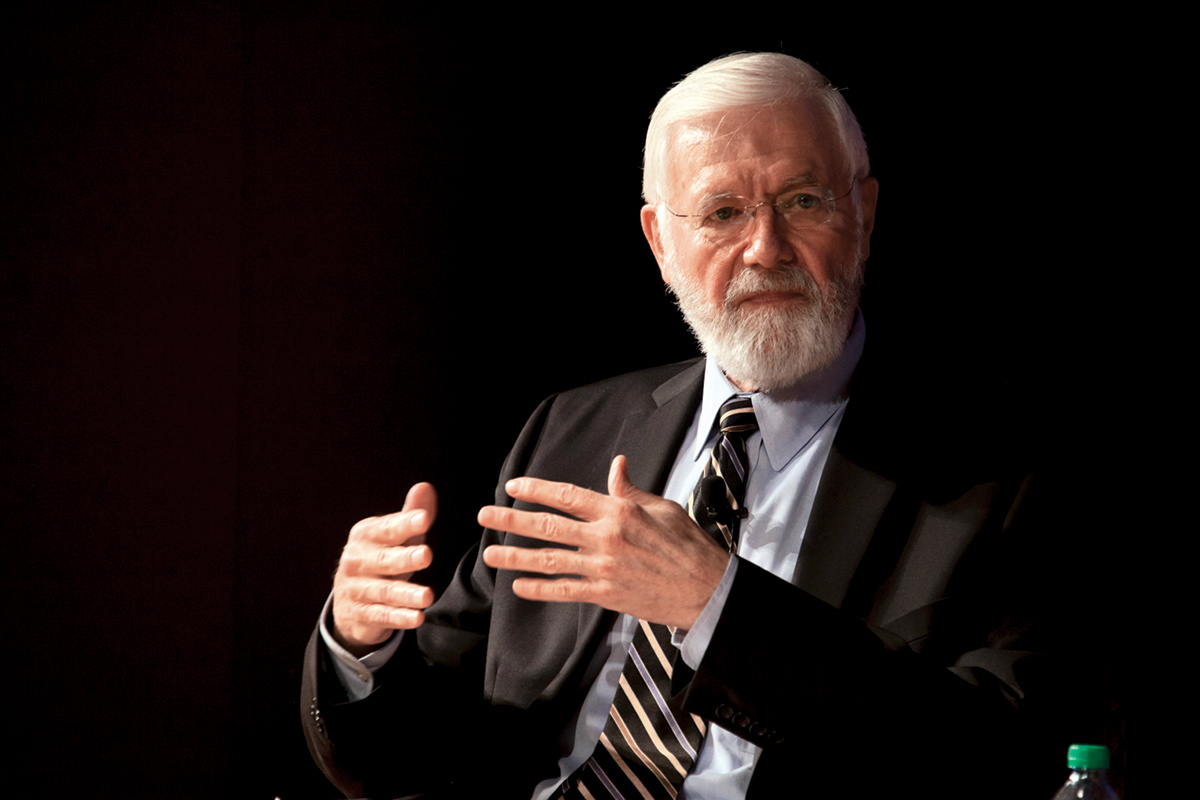Man on Fire
A public health hero recounts the victory over smallpox

Kay Hinton
You could say that Bill Foege took his sweet time.
William H. Foege, Presidential Distinguished Professor Emeritus of International Health at Emory’s Rollins School of Public Health, was a prime mover in an unprecedented chapter of public health history—the eradication of smallpox in 1979 after its three-thousand-year decimation of world populations. Yet he didn’t write about it until the publication of House on Fire: The Fight to Eradicate Smallpox in 2011.
In fact, in the author’s arms race, he was beaten to the punch by D. A. Henderson, the physician and epidemiologist who recruited Foege to what was then known as the Communicable Disease Center, now the Centers for Disease Control and Prevention (CDC). Henderson’s 2009 book, Smallpox: The Death of a Disease, was a top-down account to which Foege has now added a bottom-up version.
Foege is an accomplished scientist, but a failed egotist. Piling up personal credit doesn’t interest him; thus, after the fight against smallpox, he stayed busy—being director of the CDC (1977–1983), forming the Task Force for Child Survival (1984), serving as executive director of The Carter Center (1986–1992), and becoming senior medical adviser for the Bill & Melinda Gates Foundation (1999).
From its riveting, visceral opening, House on Fire is worth the wait. “You can smell smallpox before you enter the patient’s room, but it’s hard to describe,” it begins. “Even medical textbooks fall short when it comes to smells. The odor, probably the result of decaying flesh from pustules, is reminiscent of the smell of a dead animal.”
Although the numbers are compelling—60 percent of the world’s population was still at risk in 1967, and the disease killed every fourth victim—numbers can’t begin to calculate the human toll. The tragedy is that in 1967 a vaccine against smallpox had existed for more than 150 years, a fact that provided small comfort to its victims.
When the World Health Organization (WHO) decided to redouble efforts to fight the disease in 1967, it called on Foege, then working as a Lutheran missionary doctor in Nigeria. Four years earlier, as a physician treating Peace Corps workers in India, Foege had his first introduction to smallpox. In his words, “The experience was life changing. Textbook descriptions miss the often catatonic appearance of patients attempting to avoid movement, the smell of rotting pustules that permeates the room, and the social and psychological isolation imposed by the disease.”
At the time of Foege’s involvement, scientific thinking still centered on what he calls “herd vaccination.” The public health community had thought that 80 percent of the world’s population would have to be vaccinated to eradicate smallpox fully—an almost impossible task. Instead, three key developments carried the day in India, where Foege eventually worked: the WHO developed a better vaccine, the technique improved with the development of the bifurcated needle (a more efficient and less expensive alternative to the rotary lancet), and Foege and others on the front lines ever more efficiently tracked the virus and surrounded it with people immune to smallpox. These methods made it possible to curb the epidemic by immunizing as little as 7 percent of the population—seemingly small numbers to set against this Goliath of a disease.
In the early 1960s, before eradication began, the disease claimed two million victims a year. On June 12, 1975, that number was zero in India. “It seemed almost anticlimactic,” notes Foege. “A virus that for millennia had spread such despair, inspiring religious ritual and even the worship of a goddess, was suddenly gone from the country.”
In the course of sending smallpox packing, Foege endured much in service to the cause—from physical danger to the barriers of Indian custom to the wrath of Daniel Patrick Moynihan. Moynihan was ambassador to India during a politically tense period, when the government was suspicious of foreign workers. In April 1974 it was Foege’s turn; he was summoned to Moynihan’s office, where “the ambassador was standing at the side of his desk with an angry look on his face. . . . He went on to explain that India’s Communist Party was likely to announce that the United States had sent spies into India under the guise of working on smallpox.”
Foege chose the one response that was irrefutable, telling Moynihan “how the world now had a chance for a historic first in eliminating smallpox, and the key to global success was India.” Moynihan did an about-face.
The worst danger of all? Failure. As Foege concludes: “In retrospect, achieving the eradication of smallpox might look inevitable. In fact, though, the chain of events included so many opportunities for failure that success was not a given—and we knew it. We had no guarantee of success and were humbled so often that humility became a daily emotion. We didn’t let that stop us.”





